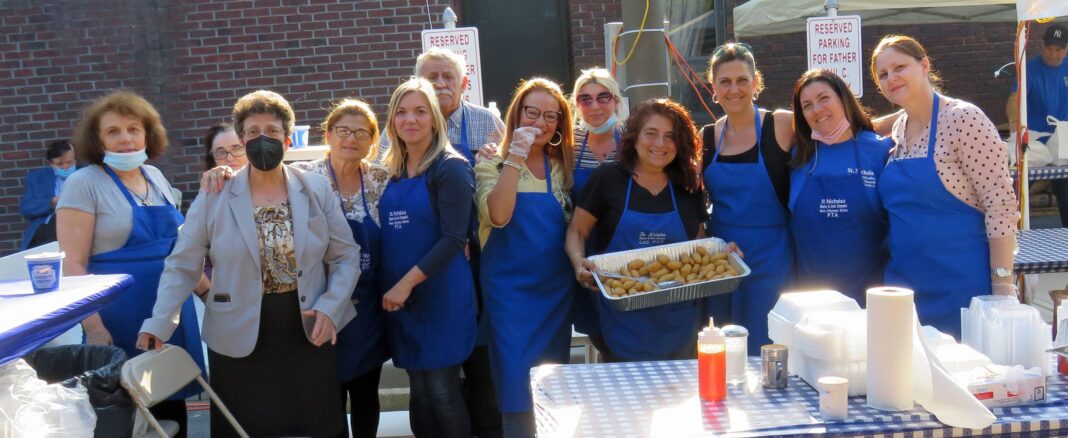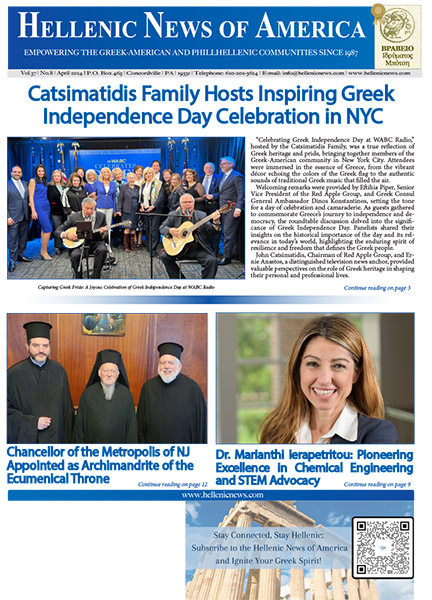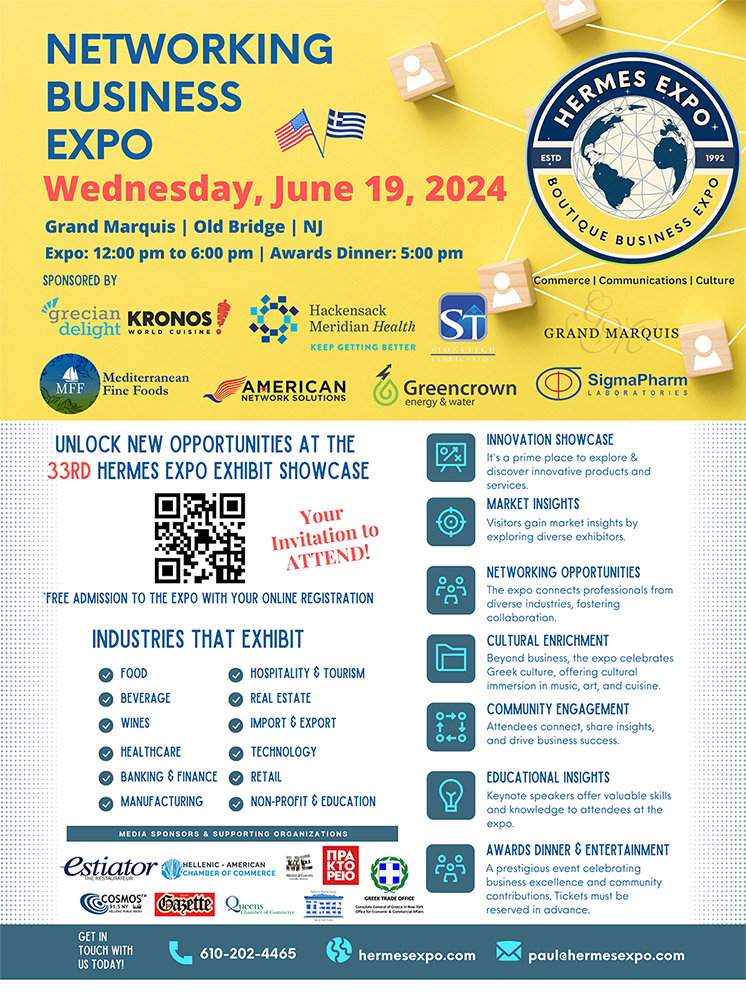Vaccinated persons can go unmasked into premises without capacity limitations, except for social distancing. New York State dropped most restrictions on Wednesday, May 19th. Greek festivals at St. Demetrios Greek Orthodox Cathedral, Astoria, and St. Nicholas Greek Orthodox Shrine Church, Flushing, New York followed these new guidelines during their festivals of May 21st-23rd weekend.
I attended the St. Nicholas Greek Orthodox Shrine Church festival. My friends and I continued to wear masks. One never knows who has covid-19 and is asymptomatic. “We are looking forward to seeing you this weekend,” said Father Paul Palesty and Father Aristidis Garinis. “Come out and support your parish.” Everyone tried their best to resume a scaled-down version, without children’s games that attract youth.
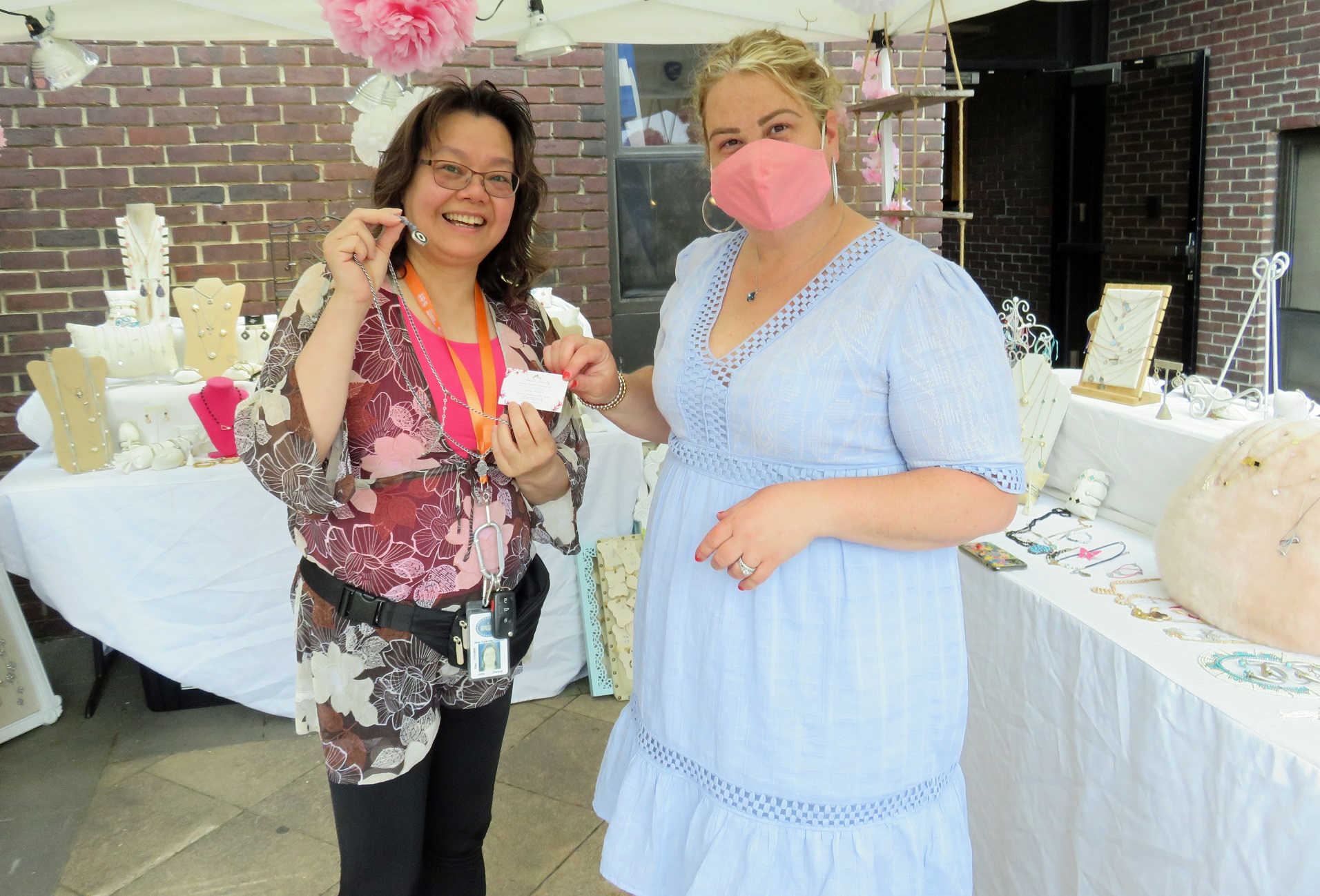
The Philoptohos flea market attracted many, who were thrilled with their purchases. The loukoumades stand is a magnet that attracts many who love this fried dessert dipped in honey. Preorders of food with the St. Nicholas Church application was used by many. Souvlaki and gyro were barbecued expertly for a very reasonable price. A 50/50 raffle was held each day. Vendors with hand-crafted jewelry, publications, novelties, and non-profit organizations had booths. These independent booths are to be commended for their extraordinary effort to resume business under the new normal. Prominent political persons attended. The parishioners are commended for trying their best in a covid-19 pandemic. For a detailed list of persons, non-profit organizations, and societies involved and attended the Festival, contact https://www.facebook.com/stnicholasflushing.
The William Spyropoulos School is under the direction of Principal Mary Tzallas. Principal Panagiota Lilikakis directs the Stephen and Arete Cherpelis Hellenic School of St. Nicholas, encompassing Greek language and culture. Mrs. Athena Kromidas, Principal Emeritus and President of the High Council for Greek Education in the U.S., said “I am happy to attend the St. Nicholas Festival, that is being resumed after the horrible covid-19 pandemic, I am moved o see everyone. The 2021 Festival is a success.”
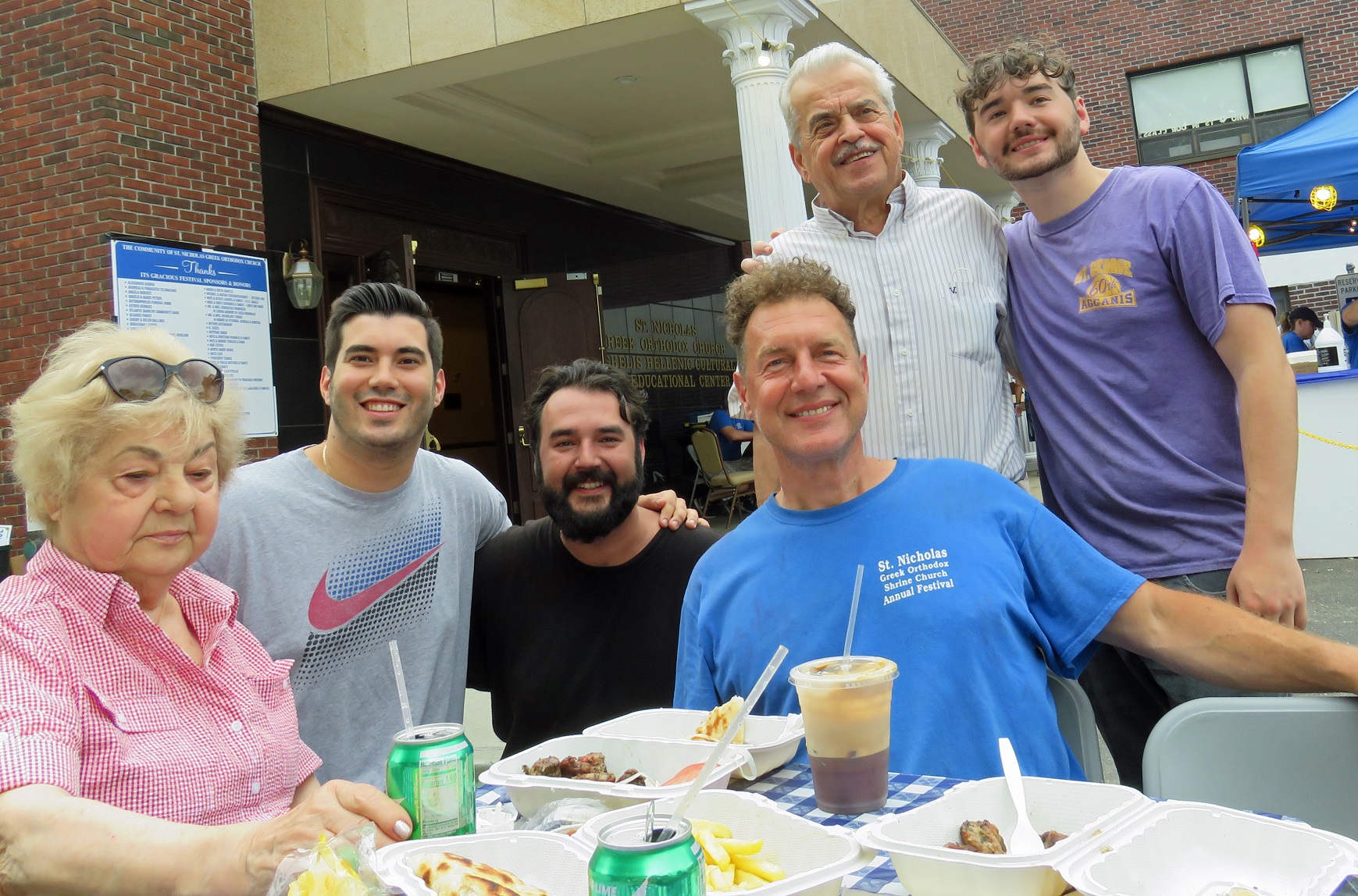
Andy Tsiolas, Christopher Fillos, and Sotiris Georgiou have been working since they were teenagers. Their families and extended network of friends form the backbone of the volunteers. “I have been helping for 45 years as a teenager,” said Mr. Tsiolas. Their parents, Sotiria and Theodore Fillos have helped in food preparation from 1959. They are from Karpenisi, Greece. Evrytanon Amerikis “To Karpenisi” aids St. Nicholas church every year, as well as other organizations.
Irene Chung, community activist, explained “I attended the festival every year. So nice they opened this year. Buying Greek food and shopping with vendors was fun.” Chrissy (Chrisoula) Douroudakis, a member of the NYC public school system, has two sons who were graduated from the Stephen and Arete Cherpelis Greek Afternoon School. “I am a graduating parent,” she said. “I help every year at the loukoumades booth.” St. Nicholas Church is home for families. Mrs. Evangelia Klidas and members of Panchiaki “Korais” Society and Chian Federation, showed their continuous support.
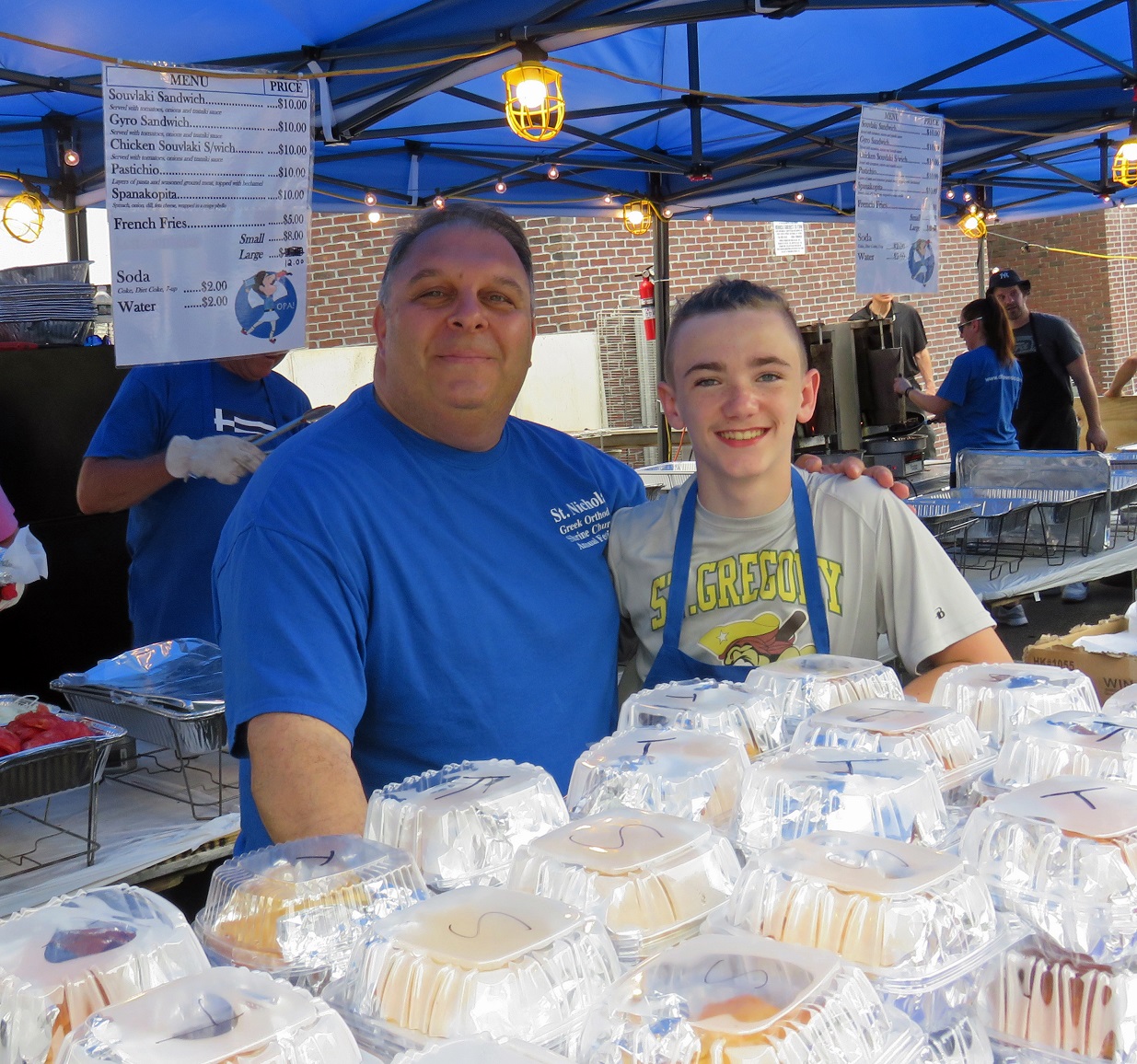
Maro Daravira, an NYC educator, came with three generations of her family. “Our family really enjoyed the handmade items from the booths,” she explained. “We highly recommend the loukoumades to everyone! We had a blast! Great food! Great shopping!”
International scientist Andreas George investigated the existence of St. Nicholas “In The Footsteps Of St. Nicholas.” His scientific examination of sources and historical sites disproves the 1970’s action of the Vatican, demoting St. Nicholas as a major saint or characterization as a mythological figure. Mr. George says his goal is to “present reasonably, accurate historical information about his life. During my search for St. Nicholas, the bishop of Myra, who lived in the 3rd-4th centuries A.D., I tried to establish credibility in the face of conflicting information, distortion and exaggeration.”
The author visited places that influenced St. Nicholas’ character. His search through Greek documents in Byzantine Bari, Italy, Greece, Asia Minor and Cyprus reflects his scientific background for accuracy. He describes the evolution of St. Nicholas of Myra as Santa Claus, in its evolution in America, primarily in New York. His miracles are explained in detail. Relics of St. Nicholas were in several churches in New York. The customs, traditions, social and religious life of St. Nicholas Shrine Church in Flushing, New York are described in detail.

The life of St. Nicholas in Myra, modern Demre in Asia Minor, Turkey is not widely known. Mr. George describes his life in detail referring to many sources. His major source is Michael the Archimandrite of 842 A.D., Symeon the Translator, written five centuries after St. Nicholas’s death in 335 A.D. and others. The problem with his research, he admits is that it is not based on primary sources. There are no primary sources describing his personal life, only secondary sources centuries after St. Nicholas’ death. Alexander the Great’s life is based on the same secondary sources.
St. Nicholas’ ancestors were Greeks, descendants of Alexander the Great’s colonists or of Cretans. The author believes St. Nicholas’ ancestors were most likely from Crete, because of similar customs and traditions with the Greek island. Modern Greek sources on the Greek Cities of Asia Minor show that the Greek communities along the Asia Minor coast had up to 50 percent Cretans until the 1922 Catastrophe. Their dialect and customs were also like the Cretan culture. Mr. George’s research added information that St. Nicholas spent time in Cyprus through his visits to monasteries and study of Greek sources. His translations into English of these facts are invaluable to a serious reader.
The author explains that the lack of written information on St. Nicholas comes from the following historical events: suppression of information by Julius the Apostate; destruction of church documents by the 9th century Iconoclastic movement, the Crusaders, Moslems, Arab pirates, and the Protestant Reformation. The 11th and 12th chapters provide facts that will open the reader’s eyes on the real St. Nicholas of Myra. The author’s pilgrimage to Demre in Turkey (Ancient Myra) shows the rediscovery of the Christian homeland.
I personally was fascinated by his portrayal of Bari, Italy as a Byzantine stronghold. In Modern Greek history books, the fall of Byzantine Bari to the Normans was a major catastrophe listed on every timeline. The relics of St. Nicholas were sent to Bari in the 11th century to save them from the Moslem invaders of Myra, Asia Minor. The history and the building of the Basilica of St. Nicholas of Bari give one a total view of this center of Byzantium in the west. The glory of Bari, unknown to many, makes chapter 6 and 7 of major interest to all whose ancestors were from this major trade center.
What did St. Nicholas look like? Unknown to many, the author describes the reconstruction of the saint’s bones in the 1950’s by Anatomy Professor L. Martino of the University of Bari and two doctors. Their scientific investigation showed the bones were of a man 1.67 meters (about 5 feet and six inches) tall with a broad forehead and large sunken eyes. This description is like the facial characteristics in Byzantine icons. Professor Martino explained the bones belonged to the Mediterranean, more likely a Greek from Asia Minor. Mr. Andreas George is a scholar, having written scientific papers on radioactivity and radiation exposure. His background as a scientific investigator and author makes this one of the finest books written on St. Nicholas of Myra. The book is available at Seaburn, 3318 Broadway Astoria, NY 11106, (718) 784-2224, www.seaburn.com. The 2021 St. Nicholas Shrine church Festival brings to life the meaning of St. Nicholas, beloved by all.




